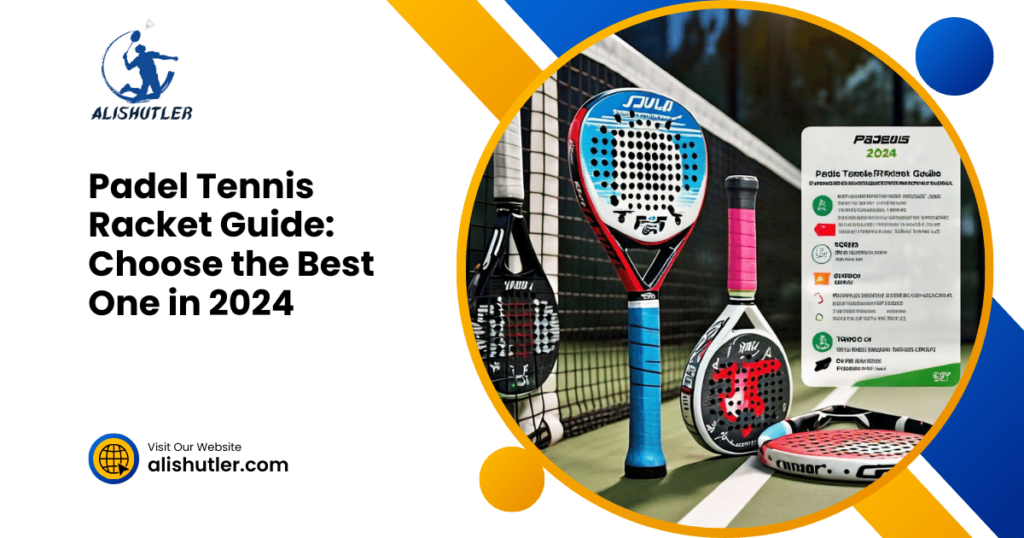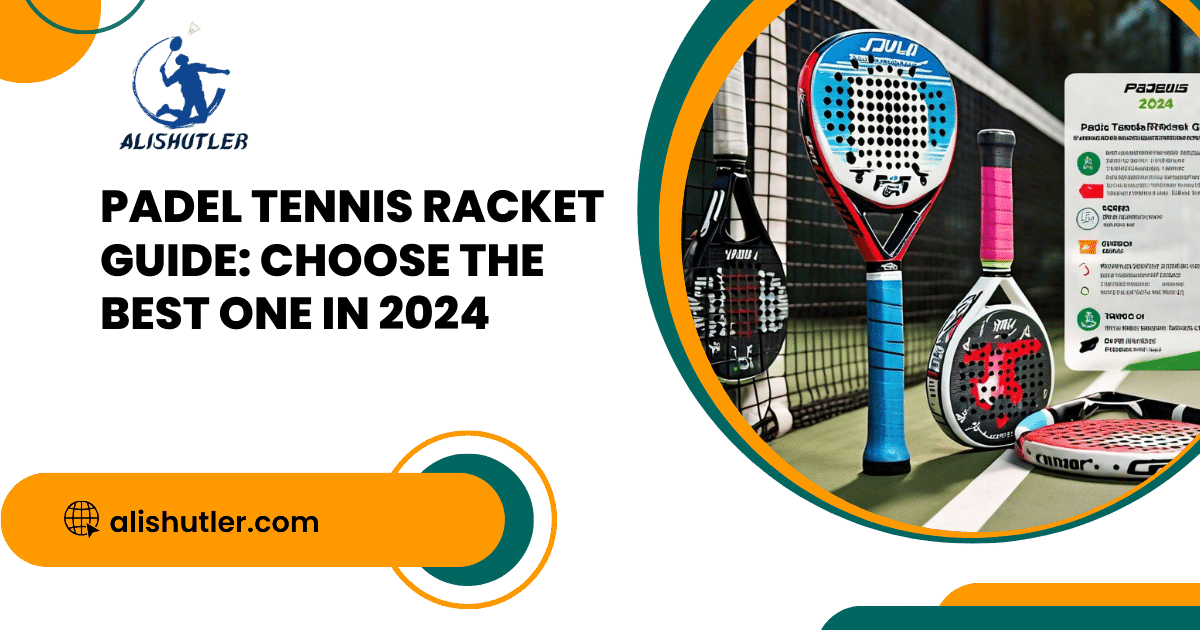Padel tennis rackets have evolved significantly since their inception in the 1960s, combining elements from tennis and squash to create a unique playing experience. These rackets are designed with specific features to enhance power, control, and maneuverability on the court. Whether you are a beginner or a seasoned player, choosing the right padel tennis racket can greatly impact your game performance. Understanding the history behind these rackets can provide valuable insights into their design and functionality, helping you make an informed decision for your gameplay.
Table of Contents
Key Takeaways
- Consider Your Skill Level: Match the features, techniques, and technologies of the padel tennis racket to your skill level and playing surface. Beginners may benefit from rackets with larger sweet spots for better control and power, while advanced players might prefer rackets with more precision and maneuverability.
- Focus on Playing Style: Choose a racket that complements your playing style. If you prefer aggressive shots and attacking play, opt for a racket with a balance of power and control. For defensive players, a racket with enhanced maneuverability and stability might be more suitable.
- Prioritize Player Preferences: Take into account your personal preferences when selecting a padel tennis racket. Factors like grip size, weight distribution, and overall feel can significantly impact your comfort and performance on the court.
- Understand Racket Construction: Familiarize yourself with the different techniques and materials used in racket construction. This knowledge can help you make informed decisions based on how certain features contribute to the overall performance of the racket.
- Optimal Materials for Performance: Choose rackets made from high-quality materials that enhance performance. Graphite, carbon fiber, and other advanced composites offer durability, power, and responsiveness, ensuring a reliable and effective playing experience.
- Experiment and Seek Advice: Don’t hesitate to try out various rackets and seek advice from experienced players or coaches. Testing different rackets on the court can provide valuable insights into which one best suits your game, ultimately improving your overall performance.
Exploring Padel Tennis Racket Features
Frame
A padel tennis racket consists of a sturdy frame that determines its durability and power. Typically made of materials like carbon fiber or fiberglass, the frame provides stability during shots.
The frame shape varies from teardrop to round, affecting the racket’s sweet spot size and maneuverability. A teardrop-shaped frame offers more power, while a round one provides better control.
Face
The playing surface of a padel racket is called the face, which directly impacts the ball’s spin and pace. A rough face surface enhances spin, enabling players to add more effects to their shots.
Different face textures cater to varying play styles. A textured face increases ball grip, assisting in generating spin for tricky shots such as slices and lobs.
Grip
The grip of a padel racket plays a crucial role in player comfort and control. It helps absorb sweat to prevent slipping during intense matches, ensuring a secure hold on the racket.
Grip sizes vary to accommodate different hand sizes and preferences. A smaller grip allows for more wrist action, ideal for players seeking extra spin on their shots.
Weight Distribution
Balance in a padel racket refers to how weight is distributed across the frame. The balance affects maneuverability and power – head-heavy rackets provide more power, whereas evenly balanced ones offer better control.
Rackets with varying balances suit different player styles; aggressive players may prefer head-heavy rackets for powerful smashes, while defensive players might opt for evenly balanced rackets for precise shots.
Understanding Modern Racket Technologies
Carbon Fiber
Carbon fiber, a key component in modern padel tennis rackets, offers exceptional strength and lightness. This material enhances racket durability while ensuring optimal performance on the court. By integrating carbon fiber into the racket frame, manufacturers achieve a perfect balance between power and control.
Vibration Dampening
Innovative vibration dampening technologies play a crucial role in improving player comfort and reducing the risk of injury. These advancements minimize unwanted vibrations upon ball impact, providing a smooth and stable feel during gameplay. As a result, players can focus on their technique without being distracted by excessive vibrations.
Power, Control, and Comfort
Modern padel rackets leverage advanced materials to enhance various aspects of gameplay. The use of innovative materials such as carbon fiber and polymer blends contributes to increased power generation without compromising control. These materials offer superior shock absorption properties, ensuring a comfortable playing experience for athletes of all levels.
Choosing Optimal Materials for Performance

Carbon Fiber
Carbon fiber is a popular choice in padel tennis racket construction due to its lightweight and stiff properties. This material enhances power and maneuverability, ideal for aggressive players seeking maximum performance. The stiffness of carbon fiber provides excellent control during shots, allowing for precise placement on the court.
Fiberglass
Fiberglass is another commonly used material known for its durability and affordability. While not as stiff as carbon fiber, fiberglass rackets offer good shock absorption, making them suitable for players looking for a balance between power and comfort. The flexibility of fiberglass contributes to improved handling and reduced vibrations upon impact.
Foam Core
Rackets with foam cores are valued for their ability to dampen vibrations, offering players enhanced comfort during gameplay. The softness of foam cores aids in reducing the risk of injury from repetitive impacts, making them a preferred choice among players prone to arm fatigue. However, the trade-off is slightly reduced power compared to stiffer materials like carbon fiber.
Evaluating Performance Factors
When selecting a padel tennis racket, it’s essential to consider how different materials impact key factors such as power, maneuverability, and shock absorption. Carbon fiber rackets excel in providing high power output and precise control on shots, making them suitable for aggressive players seeking an edge on the court. On the other hand, fiberglass rackets offer a more balanced approach with good durability and shock absorption properties, catering to players prioritizing comfort during gameplay.
Trade-offs in Material Selection
The choice of material in a padel tennis racket involves balancing factors like stiffness, durability, and overall performance. Players must weigh the benefits of each material against potential drawbacks to find the optimal combination that suits their playing style and preferences. While stiffer materials like carbon fiber deliver enhanced power and control, they may lack the comfort provided by more flexible options like fiberglass or foam cores.
Techniques in Racket Construction
Molding
Racket construction begins with molding, a crucial process where the racket’s shape is formed. This step involves creating the frame’s initial structure, determining its weight distribution and balance.
The molding technique directly impacts the racket’s performance characteristics, such as power, control, and maneuverability on the court. By adjusting the mold design, manufacturers can tailor these attributes to suit different playing styles and preferences.
Layering
Layering plays a vital role in enhancing the strength and durability of padel rackets. Multiple layers of materials like carbon fiber are strategically placed to optimize stiffness and responsiveness during gameplay.
Layering techniques help distribute impact forces evenly across the racket’s surface, reducing vibrations and increasing stability when striking the ball. This results in improved shot accuracy and overall performance on various court surfaces.
Weaving
The weaving technique involves intricately intertwining materials like carbon fibers to create a sturdy yet flexible racket structure. This process enhances the racket’s torsional stability, allowing players to execute precise shots like volleys with ease.
Matching Rackets to Skill Levels

Weight Consideration
When selecting a padel tennis racket, beginners should opt for lighter rackets as they are easier to maneuver, aiding in developing skills. Intermediate players may benefit from slightly heavier rackets for improved control and power. Advanced players typically prefer heavier rackets to generate more power in their shots.
Head Size Variation
The head size of a racket plays a crucial role in catering to different skill levels. Beginners often find larger head sizes more forgiving, offering a larger sweet spot for better contact with the ball. Intermediate players might opt for medium-sized heads, balancing power and control. Advanced players usually prefer smaller head sizes for enhanced precision.
Impact of Flexibility and Stiffness
The flexibility and stiffness of the racket significantly affect player performance across various skill levels. Beginners tend to benefit from more flexible rackets, which provide additional power without requiring advanced technical proficiency. Intermediate players might choose rackets with moderate flexibility for a balance between power and control. Advanced players often prefer stiffer rackets that offer precise control over their shots.
Strings Selection
Choosing the right strings is essential when matching rackets to different skill levels in padel tennis. Beginners may opt for softer strings that offer more comfort and power, helping them improve their game gradually. Intermediate players might consider hybrid string setups combining durability and playability. Advanced players often go for stiffer strings that provide excellent control and spin on the ball.
Team Dynamics
In padel tennis, understanding your team composition is crucial when selecting rackets based on skill levels. Beginners playing in teams can benefit from rackets that offer forgiveness and ease of use, promoting enjoyable gameplay. Intermediate players may focus on coordinating with teammates to strategize shots effectively using compatible racket choices. Advanced players often tailor their racket selections to complement their team’s overall playing style and strengths.
Selecting Rackets for Playing Style

Balance
When choosing a padel tennis racket, consider the balance that suits your playing style. A balanced racket offers control and power, ideal for players who prefer an all-around game.
Shape
The shape of a racket significantly impacts your performance on the court. A teardrop-shaped racket provides more power, suitable for aggressive players seeking to dominate rallies.
String Pattern
The string pattern of a racket influences the amount of spin and control you can generate. A dense string pattern enhances control, benefiting defensive players aiming for precise shots.
Exploring how different racket attributes align with various playing styles is crucial in maximizing your performance on the padel court. By understanding the impact of factors like balance, shape, and string pattern, you can make informed decisions when selecting a racket that complements your unique style of play.
Customization options further allow players to tailor their rackets to enhance specific aspects of their game. Whether you are looking to improve power, control, or maneuverability, customization services offer a personalized touch to meet your individual needs on the court.
Considering Player Preferences
Color Selection
When choosing a padel tennis racket, players often consider personal preferences such as color. Some players prefer vibrant colors for a stylish look on the court.
Brand Loyalty
Players may also have brand preferences based on factors like reputation, quality, and endorsement by professional players. Popular brands like Head or Wilson are often favored.
Grip Size Importance
The gameplay experience can be significantly impacted by the grip size of the racket. Players should choose a grip size that feels comfortable and secure in their hands.
Customization Options
Customizing a padel racket allows players to tailor it to their specific preferences. From adjusting weight distribution to string tension, customization can enhance performance.
Swing Speed Influence
Player’s individual playing style, including their swing speed, dictates the type of racket that suits them best. A lighter racket may benefit players with faster swing speeds.
Shot Selection Consideration
Different rackets cater to various shot types. Players who prefer aggressive play styles might opt for rackets designed to provide more power and control during shots.
Personalization Benefits
Personalizing a racket based on individual preferences can lead to improved comfort and performance on the court. It enhances player confidence and overall gameplay satisfaction.
Selecting the Right Padel Tennis Racket
Budget Consideration
When choosing a padel tennis racket, it’s essential to consider your budget. High-end rackets can be costly, while more affordable options are available. Ensure you find a balance between quality and cost.
Expert Guidance
Seek advice from padel specialists when selecting a racket. They can provide valuable insights based on your skill level, playing style, and physical attributes. Their expertise will help you make an informed decision.
Playing Frequency and Long-Term Goals
Consider how often you play padel and your long-term goals in the sport. If you play frequently, durability becomes crucial. For players aiming to improve their game, investing in a high-quality racket is beneficial for performance enhancement.
When choosing a padel tennis racket, weigh the pros and cons of different models to find one that suits your playing style. Here are some key factors to consider:
- Grip: Ensure the racket’s grip feels comfortable in your hand to prevent slippage during intense rallies.
- Size: The size of the racket head impacts power and control. Larger heads offer more power, while smaller heads provide better control.
- Bounce: Rackets with a good bounce help generate spin and control shots effectively.
- Court Size: Consider whether you primarily play on standard or smaller courts as this can influence your choice of racket.
Remember that each player has unique preferences, so test out various rackets before making a final decision. By understanding these factors and seeking expert advice, you can select the perfect padel tennis racket that enhances your gameplay experience.
Closing Thoughts
By now, you’ve gained a comprehensive understanding of what makes a top-notch padel tennis racket. Armed with this knowledge, selecting the perfect racket that aligns with your playing style and skill level should be a breeze. Remember to consider the materials, technologies, and construction techniques that suit your preferences best. Your game can significantly benefit from choosing the right padel racket tailored to your needs.
Now, go ahead and hit the courts with confidence, armed with your newfound expertise in padel racket selection. Elevate your game by applying these insights and watch how the right racket enhances your performance. Play smarter, not harder!
Frequently Asked Questions
What are the key features to consider when selecting a Padel tennis racket?
When selecting a Padel tennis racket, focus on aspects like weight, balance, shape, and grip size. These factors play a significant role in determining your performance on the court.
How do modern racket technologies impact Padel tennis performance?
Modern racket technologies enhance power, control, and maneuverability on the court. Features such as carbon fiber materials, vibration dampening systems, and specialized frame designs can improve your overall gameplay.
Which materials are optimal for Padel tennis racket performance?
Materials like carbon fiber and fiberglass are popular choices for Padel tennis rackets due to their lightweight yet durable nature. These materials offer a good balance of power and control during gameplay.
What skill level should match the type of Padel tennis racket chosen?
Beginners may benefit from lighter rackets with larger sweet spots for better control and forgiveness. Advanced players might prefer heavier rackets that offer more power and precision in their shots.
How important are player preferences when selecting a Padel tennis racket?
Player preferences play a crucial role in choosing the right Padel tennis racket. Factors like color, brand reputation, grip feel, and even design aesthetics can impact your comfort and confidence during matches.



